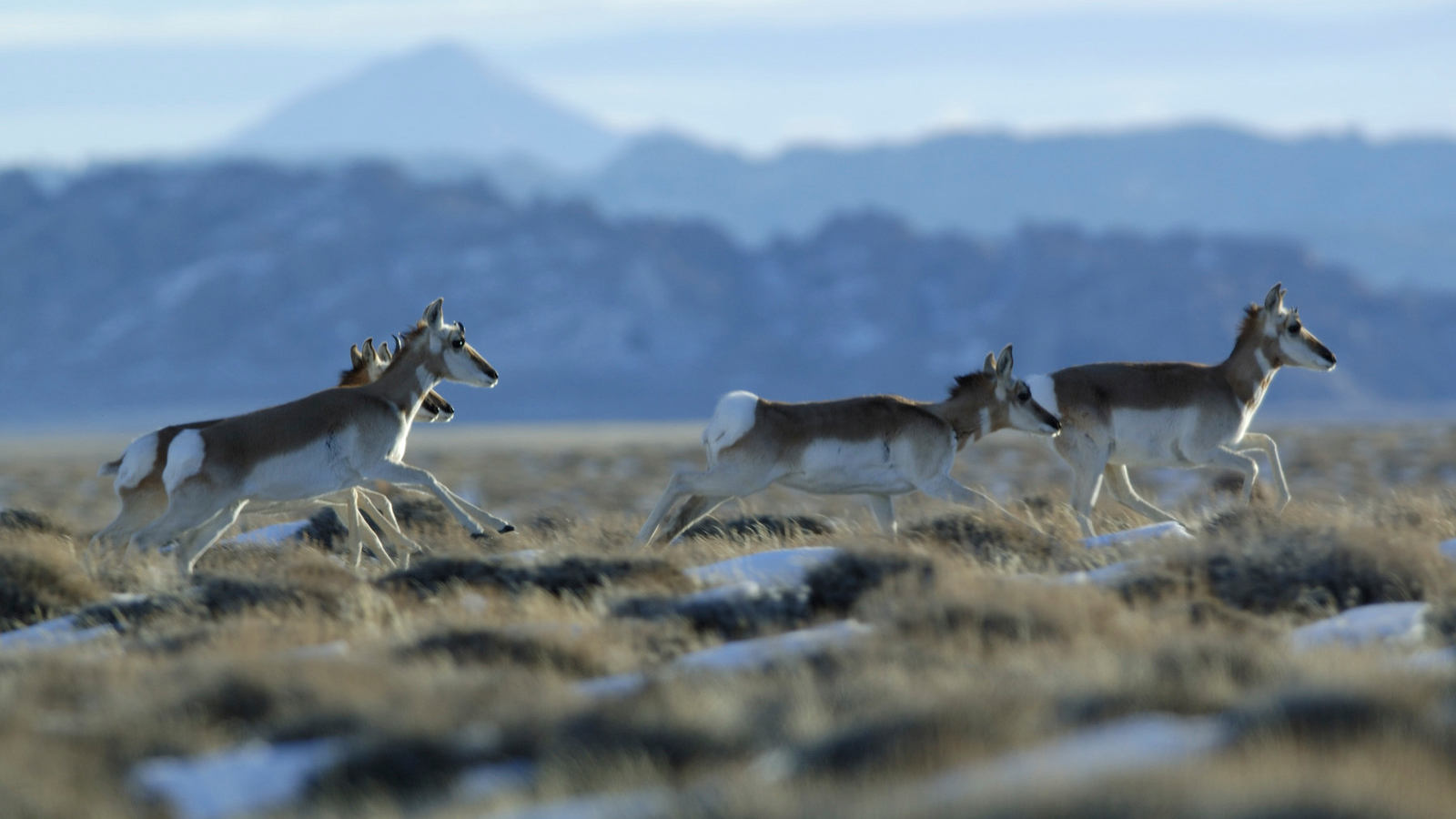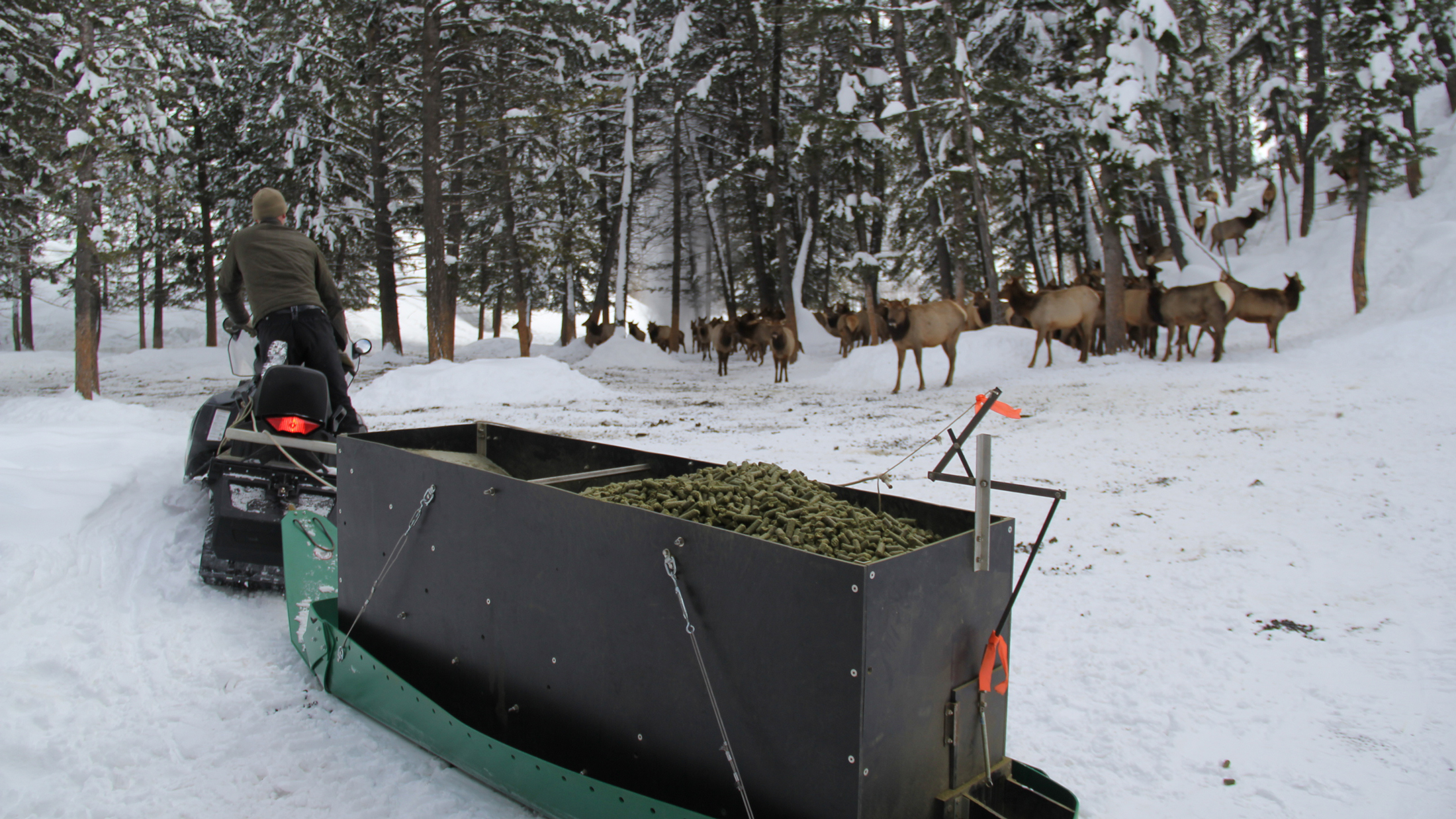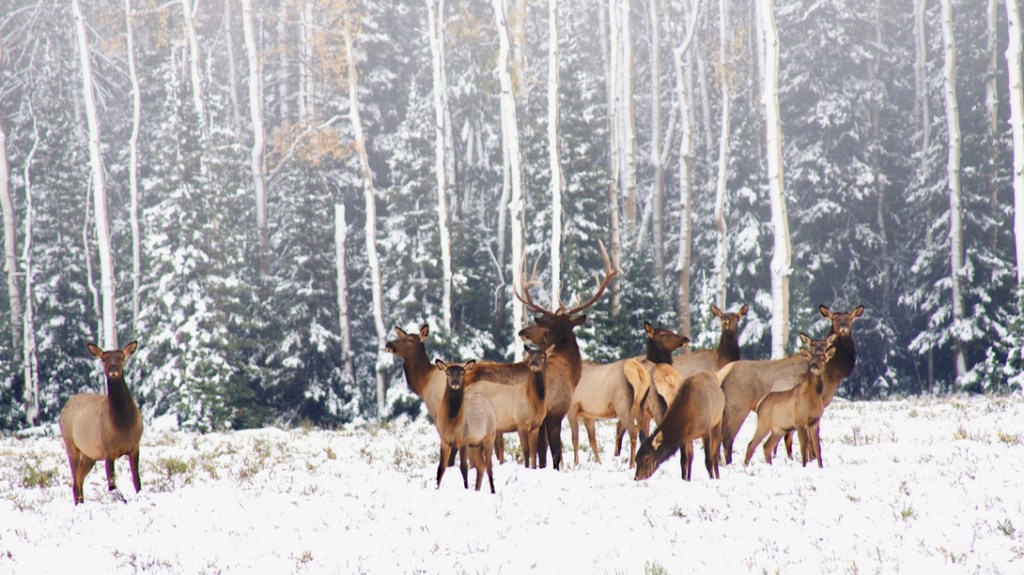The highway looks more like a track for the luge than a road for my truck. Snow is shoved to both sides and my tires are sliding over an ice-coated middle. I’m not going 140 miles an hour as athletes do in one of the oldest Olympic sports.
I’m only going 40 mph. A two and a half hour drive to Salmon, Idaho is turning into four. Even though the road is empty of cars, I’m not alone. The highway is the only place plowed and the animals know it. They’re just off the shoulder too uncomfortably close to my ride. Elk on my right. Pronghorn on my left.
“Wildlife are getting as sick of walking around in four feet of snow as I am,” says Daryl Meints, Idaho Department of Fish and Game regional wildlife manager. “Any place snow is plowed, that’s where they’re moving to. Roads, sidewalks, driveways. They’re more than happy to find a place where they don’t have to wallow around in the snow. It’s easier to travel and burns less energy.”
Saving energy is key.
Animals migrating to winter range bring fat reserves with them. We’re halfway through winter and those reserves are running low, especially in regions smothered in high snow and low temps. This is make-or-break season for wildlife. Many will break. Here’s why:

Deer Don’t Do Winter
Deer struggle in the winter. Their legs are short. They eat short plants. They don’t walk well in deep snow and their food is buried early so they seek a south facing slope then stop moving when they get there. They live or die on the hillside they choose. There’s fawn mortality even in mild winters, but if does start dropping in high numbers in tough winters, that’s a population concern.
“If we have reason to believe we will lose about 30 percent of adult does, we step in for emergency feeding,” Meints says. “They are the reproductive segment that will bring back the population after a hard winter.”
Idaho Department of Fish and Game doesn’t make a habit of feeding wildlife in winter, but this year, it’s on. More than 100 wildlife feeding sites are open, mostly in the southern part of the state, costing the state $650,000. That’s almost double the department’s emergency feeding budget of $387,000 in 2008, the highest year until now.
Ten thousand deer are eating emergency offerings, hay or protein in pellet form, but in a state with an estimated 500,000 deer, 10,000 is a speck.

Pronghorn Run From Winter
While deer migrate to their spot and stay, pronghorn don’t stop moving. The deeper the snow, the farther south they go. Pronghorn just keep looking for shallow ground until they hit a fence or a highway. Both are no good for the “speed goat.”
“You see pronghorn on the north side of the interstate wishing they were on the south side,” Meints says. “If they find a hole in the fence, they’re crossing. We do not want pronghorn on the interstate.”

Elk Brawl With Winter
Elk are mobile in snow too. They’re much bigger than deer and pronghorn and they have more fat on their back. When that fat reserve runs low, they graze grass and woody plants wherever they find it. They’re generalists so they’ll also eat hay. Your horses’ hay. And they’ll fight for it.
“Adult bulls are aggressive toward horses and cattle,” Meints says. “We’ve had several cattle and horses, expensive horses, gored by adult bulls. Elk can do damage and cause death. For whatever reason, this year is probably the most aggressive I’ve seen elk.”
Property loss constitutes a feeding site. Nearly 10,000 elk are using feeding sites in areas where private property is at risk. That includes the farmer’s haystack and the livestock he’s feeding with that stack.

Moose Ignore Winter
Moose rarely show up at feed sites and they rarely die of malnutrition in the winter. Deep snow doesn’t stop them from moving or eating. Their leg length is easily double a deer’s. And what they eat, willows and woody vegetation, grows higher than grass and sagebrush.
Cold is in their favor too. Biologists sometimes see thousands of ticks on one moose. That happens in mild winters when the weather stays warm. Extreme cold, like below zero for several days, kills ticks. A moose recently fell into a window well in Hailey, Idaho. Meints helped her out and gave her a good look at the same time. No ticks. Too cold.
Moose are okay in cold, but not in crowds. They get into trouble when development occurs in riparian areas. That moose in the window well was a block from a willow-rich river.




Somewhat interesting but boring presentation of facts.
I had to laugh about the comment that there are “10,000 elk using feeding sites where private property is at risk.” 10,000 of anything in this country is nothing, and furthermore, ranchers have been leasing dirt cheap, public lands for decades and they are begrudging some elk a feeding station after human
animals have grabbed all the good spots for themselves. A sad commentary on the west.
The determination of the pronghorn to head south reminded me of wildlife crossings. Based on what little is provided here, I imagine it would be very easy to funnel them into overpasses to avoid highways.
very interesting.. I had no idea there was such a difference in ungulate winter survivorship. I could see the supplemental feeding turning into a slippery slope.. encouraging animals to come back and look for food again.